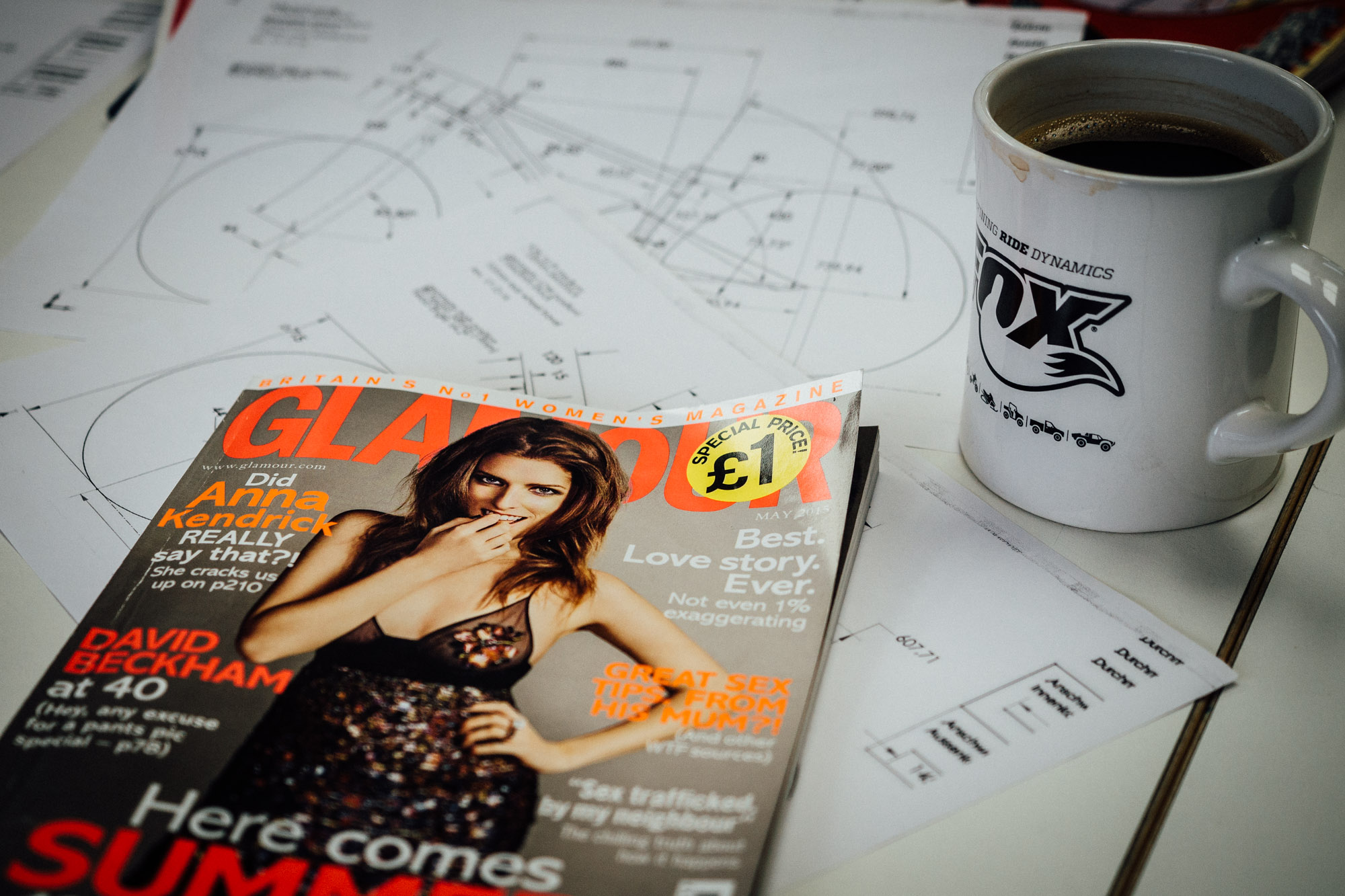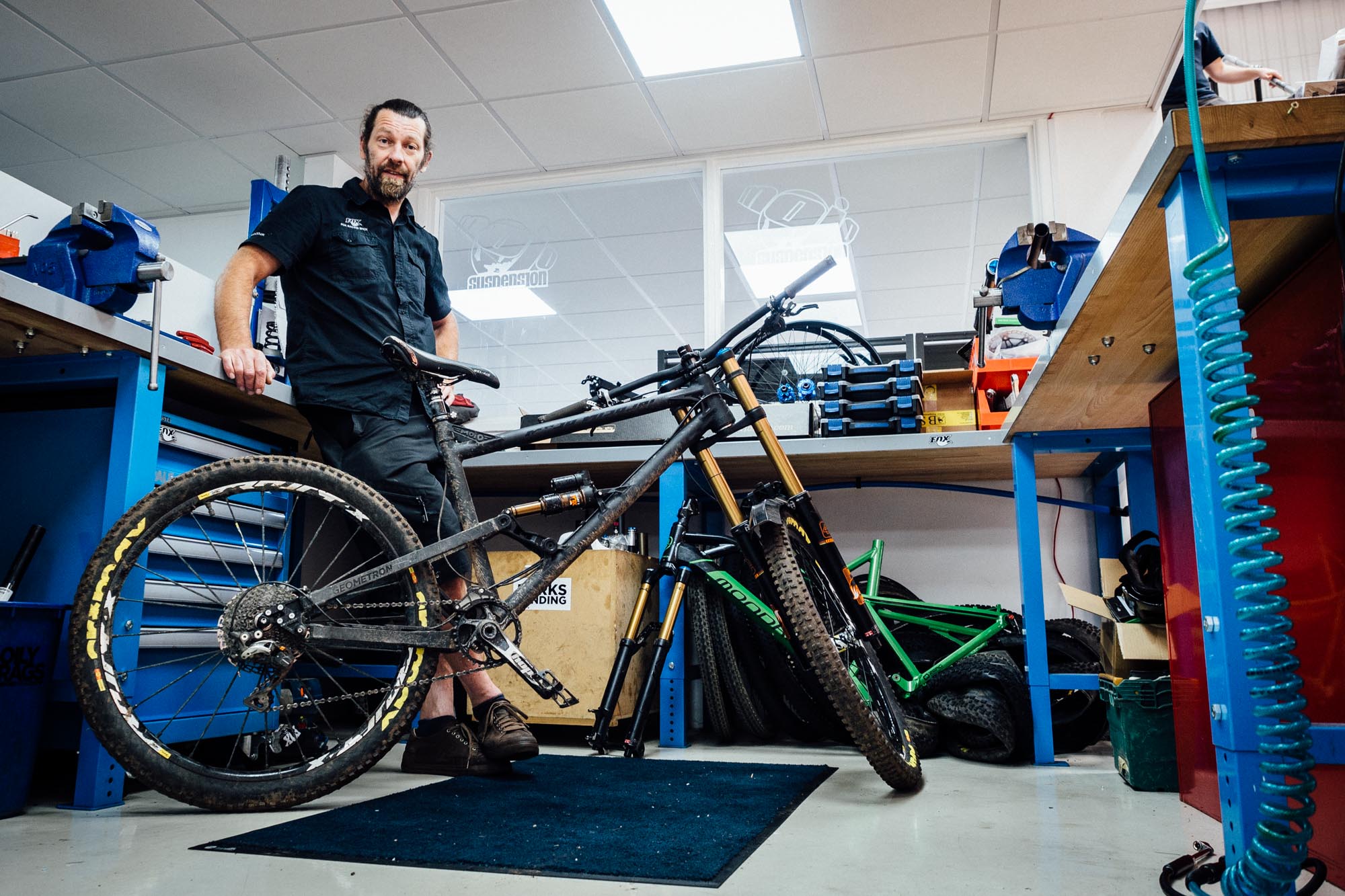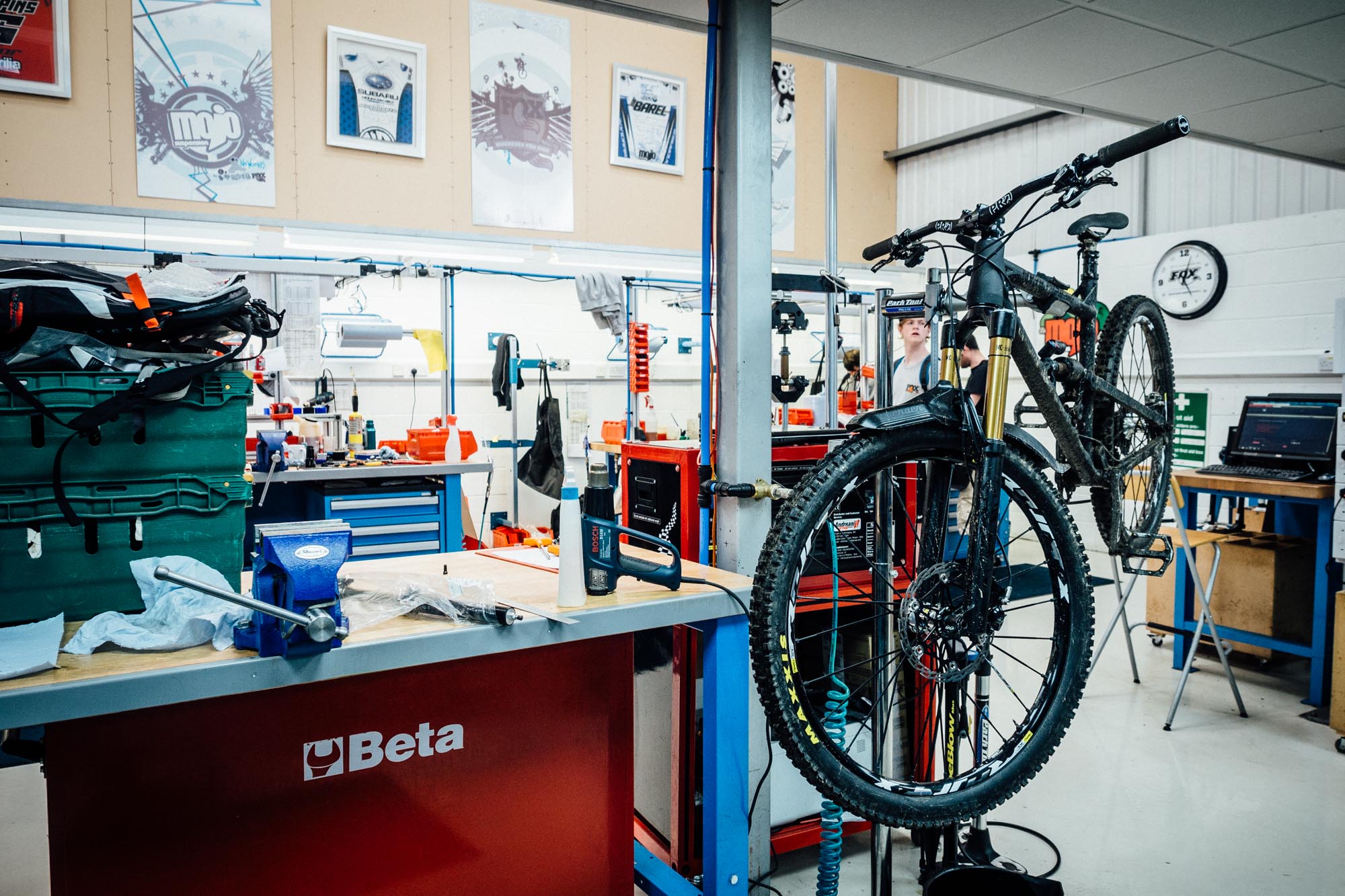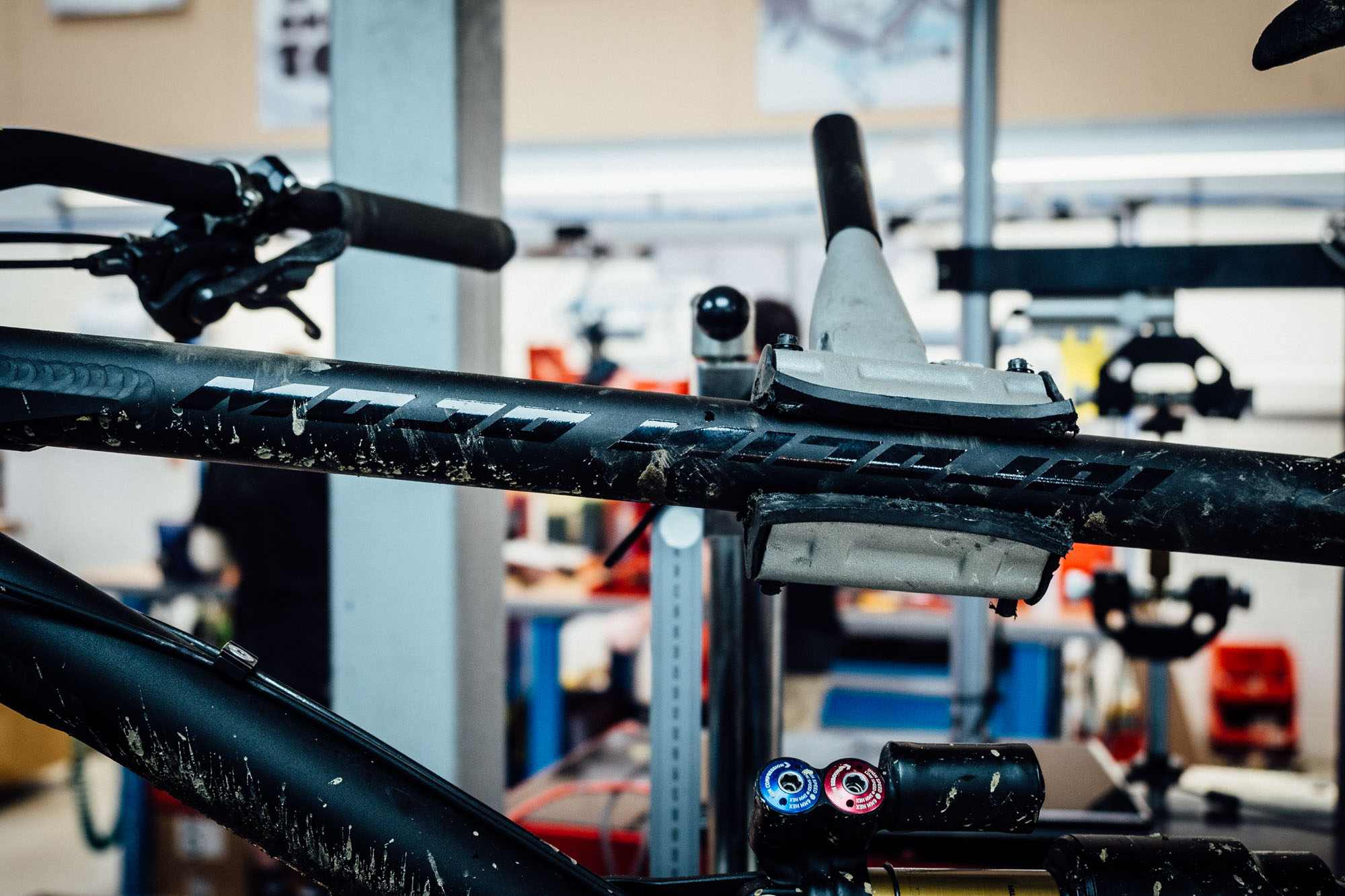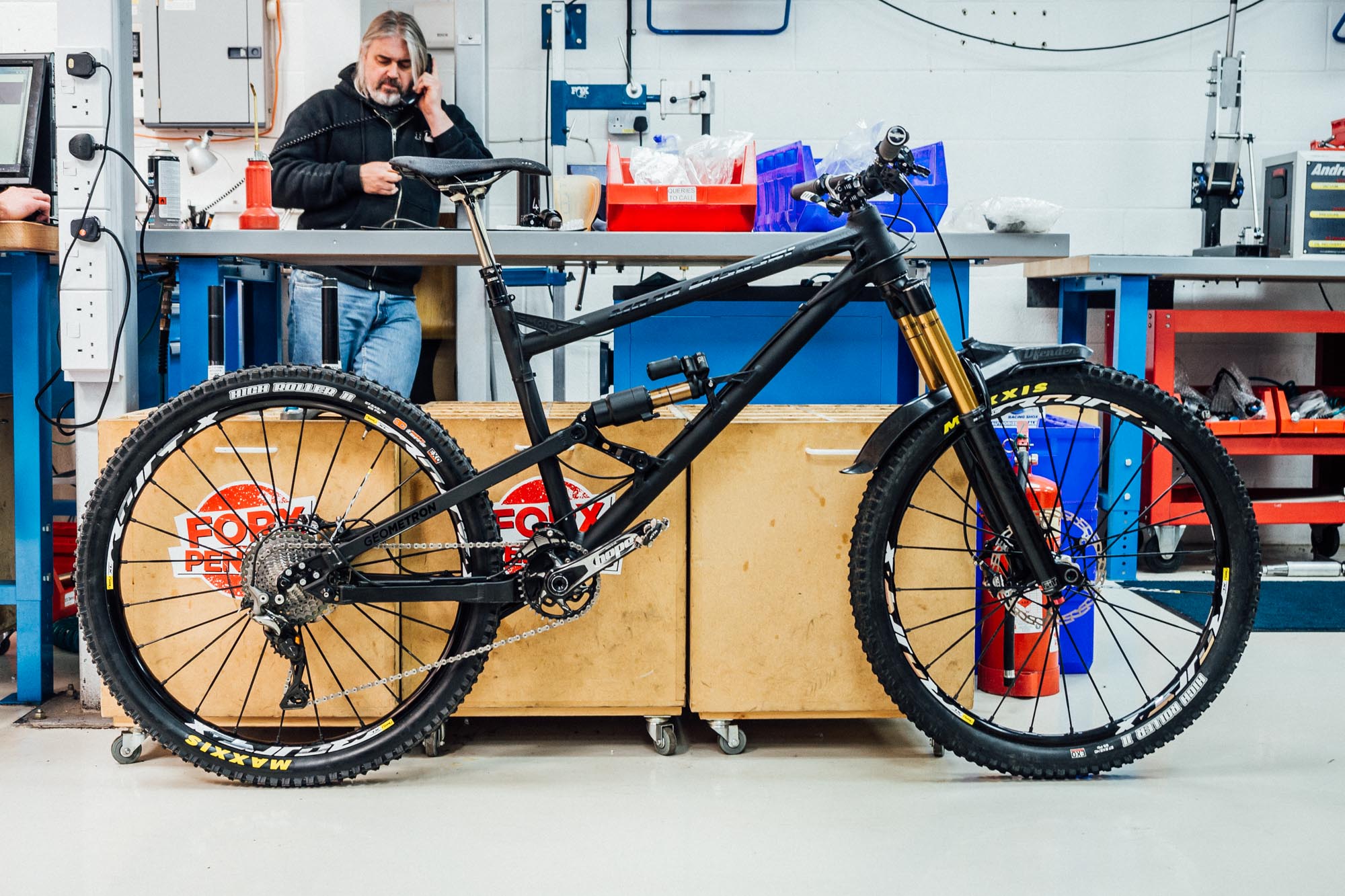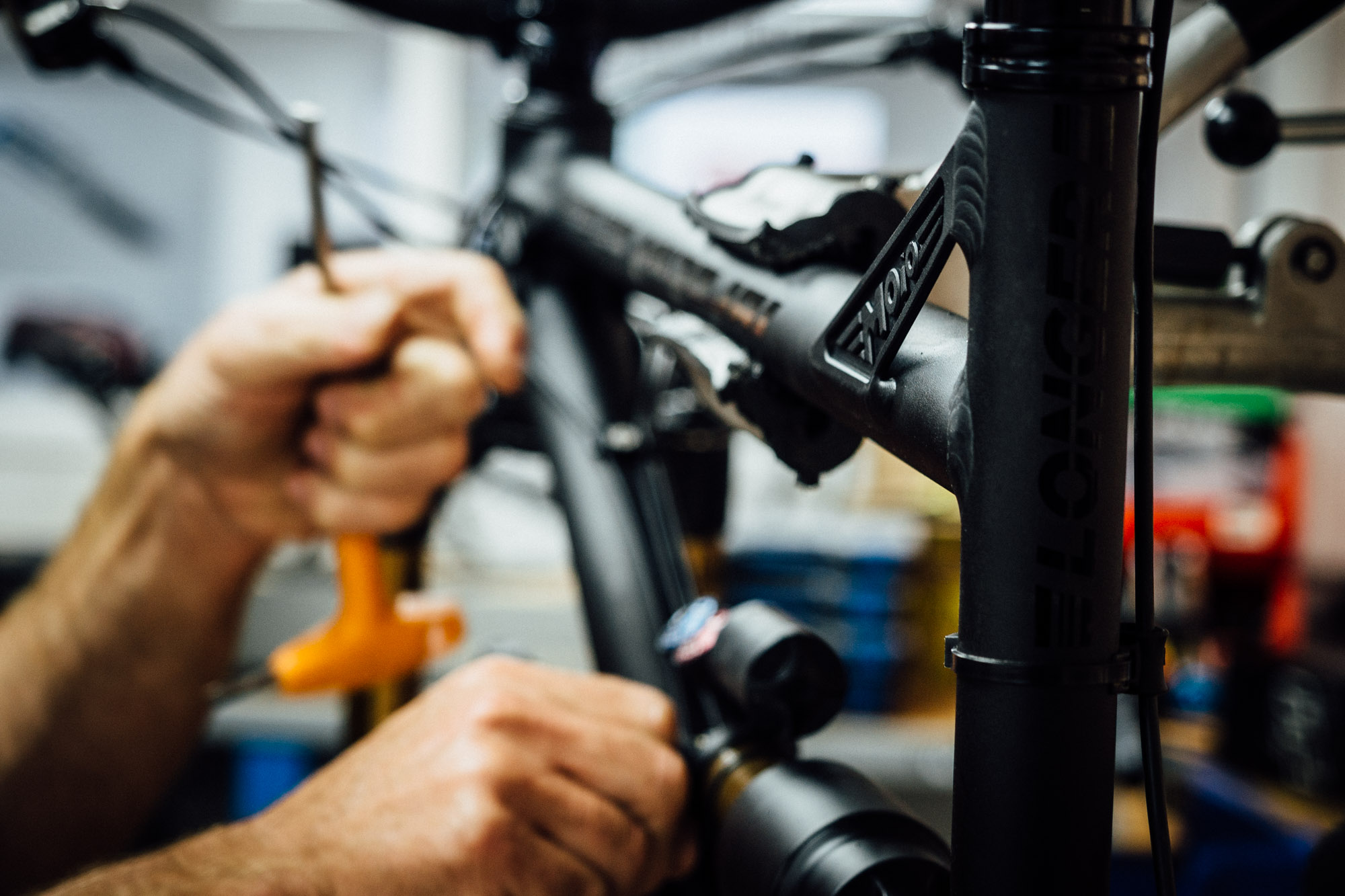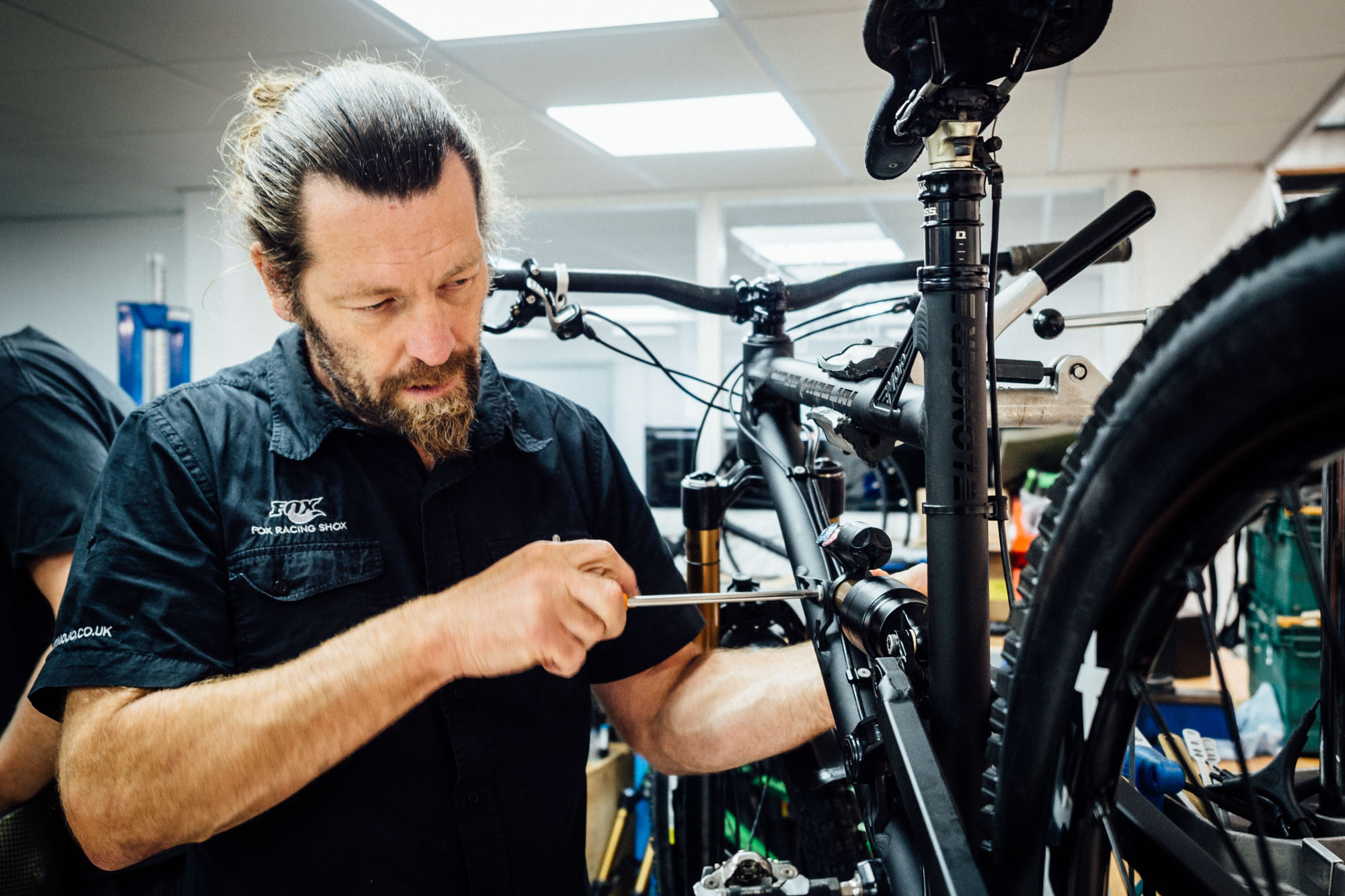THIS IS MOJO, A COMPANY NOT NECESSARILY KNOWN FOR CONVENTIONAL THINKING.
Words and photos by Sim Mainey
If you’ve been into mountain biking for any length of time chances are you know who Chris Porter is. Mojo’s main man is outspoken, passionate and opinionated, making him perfect for interviews and comment on, well, pretty much anything from the state of the industry, current fads and fashions through to beekeeping.
Chris, and Mojo as a company, are professional tinkerers, in the best sense of the term. If they think something can be improved they do it, if it can’t be done they find a way of getting it done, even if it goes against common thinking. With a workshop full of tools there aren’t too many problems they can’t solve using their in-house skills and if the solution is viable they’ll roll it out for customers. To this end it’s probably better to think about Mojo less as a suspension service centre and more as a bicycle performance tuning workshop. The desire to go faster and be better permeates the company – most of the technicians race in their spare time, lunch breaks are spent sessioning the local hills for the fastest time, hand-weights sit next to wrenches on the workbenches to turn those spare five minutes between jobs into training time.
The battle against the clock is what counts here, this was the company that made its sponsored riders race in skinsuits after all. Understanding Mojo as a company, and where its collective head is at, helps make sense of their bike, because chances are otherwise you’d think they must be mad.
With a wheelbase and headangle that makes many DH bikes look short and steep Mojo’s Geometron is quite different to any bike you’re likely to find in your local bike shop, the clue is in the naming of the sizes – long, longer, longest. The 160mm travel Geometron is built by German frame builders Nicolai and based on the company’s ION 16 frame but using geometry provided by Mojo. Nicolai are no strangers to unconventional thinking, their own range certainly has some oddballs in it and that’s before you look at some of their custom builds. With a reputation for precision, a willingness to try out new concepts and the ability to custom build, Nicolai were the obvious fit when it came to sourcing a manufacturer. The no-nonsense aesthetic also fits with Mojo’s attitude, there are no swoopy curves for the sake of swoopy curves here. Indeed the compression stay angle (Nicolai don’t use the word seatstays on full suspension frames) was changed from the one that matched the angle of the toptube in order to improve the suspension. Function first at all times, no carbon for carbon’s sake and certainly no proprietary standards here.
In an odd way the geometry of this frame is the most important thing about it yet the least important thing for the customer to worry about. It’s been tested, refined and re-tested to be the fastest it can be. What the geometry ends up being hardly seems relevant to the end-user, they just need to know it’s the best Mojo can come up with at that exact point. If Mojo find a way to make it faster they’ll implement the change in the next batch of frames, no waiting for another model year to shuffle round. This is constant evolution.
Essentially Mojo are acting as a direct sales outfit with this bike, it certainly won’t be available in your local bike shop, but the way they are selling the GeoMetron is the antithesis of direct sales where a box appears on your doorstep and you’re left to work out the rest. Buying a GeoMetron involves committing a day, or even two, to visiting Mojo and working with a technician to get you properly set up on the bike. This set up process goes much, much further than setting your saddle height and shock pressures, indeed it might even have you questioning the way you set your bike up, much like the GeoMetron has you questioning why your current bike is the way it is.
The Process
While the bike is undoubtedly interesting the thing that really interested me about the whole GeoMetron project was the process that comes with actually buying one.
While buying a bike from your local bike shop will involve a test ride, some general set-up and then maybe a service in a month’s time Mojo have taken the opportunity to show what they are really about when you buy a frame or bike from them.
Mojo are offering the Geometron in various guises from frame and shock only through to a full bike with pro-setup package. Aside from getting you the frame with a Fox Float X shock, 36 fork, Mavic wheels, XTR drivetrain and Hope components throughout, you’ll also get a day of uplifts and set-up advice from one of Mojo’s technicians and it’s this that I’ve come to find out more about. If you’re interested in trying the bike and going through this process Mojo charge £200, refundable against a full bike purchase.
Things start with a coffee and a chat. Politics, conspiracy theory, general life stuff before drifting onto bikes. The first thing that Mojo want to know is what kind of rider you are; where do you ride, how do you ride, what are your preferences in tyres, bar width, pedals. Through these details they can build a better picture of what you want the bike to do and they can then make the bike do it. Coffee in hand we go into the workshop where the demo bike is being put together for me. 800mm bars, flat pedals, Maxxis High Roller II tyres, all my favourite parts.
Chris has ridden in Calderdale, where I spend most of my time riding, so knows the trails – steep, not particularly high speed, awkward. To best cope with these trails he says he’s possibly look to increase the fork travel to 170mm, increase the mid stroke support and possibly even think about changing the fork offset. All are possible with the pro set-up package. Today we’re riding some of the trails close to Mojo HQ so the bike will be set-up for those, Chris has a very good idea on shock set-up for these and after a quick twiddle of the knobs we go for a bounce in the car park. Sag is set up at a quarter of available travel at the front and a third at the rear. Chris watches as I push down on the bike, noting the way the suspension compresses and returns. Despite some dial twiddling he’s not happy with the way the shock is behaving for me so the bike is wheeled inside, the shock removed and pulled apart and an air volume spacers added to make it more progressive. If after testing Mojo thought the shock needed a shim stack rebuild to better suit my riding they’d do it, if I wasn’t happy with the gear spread – they’ll change it, bars not doing it for me – swappable, if I wanted to use the bike for DH races as well as trail riding – Mojo could sell me a matching DH ready fork and shock that I could bolt on come race day, they’d also show me a hub modification that will let my wheels spin a little bit faster. Anything and everything that can be tweaked will be if it means you feel better on the bike. Mojo have decades worth of knowledge in how to make bikes go faster and they are eager to share it.
With the fettled shock re-fitted to the frame it’s time to go for a ride…
The Ride
For a bike whose geometry is undeniably towards the extreme end of the scale the GeoMetron initially feels incredibly normal. It certainly doesn’t feel too long or stretched in the cockpit. The only real giveaway that this is something quite different is the front wheel which appears well in front of the headtube. You’d think that this would lead to flip-flop handling, often associated with slack angled bikes, but it’s not the case here. Even at slow speeds the GeoMetron carves gently rather than dropping drastically as you pitch into a corner.
The first part of the trail is, inevitably, a climb. We pedal up at a reasonably shallow gradient, occasionally having to get out of the saddle for short and steep sections. I’m running a Fox X2 shock, Fox’s air sprung DH shock, and yet I don’t feel the need for a shock lockout, which is a good job as there isn’t one. We come up to a series of uphill switchbacks, these should be the worst case scenario for such a long bike. In fact it feels less hard work than some XC bikes, the length of the bike and the central body position thanks to the steeper than usual seatube means it requires nothing more than going a bit wider at the entry point to get round. There’s no mid-corner front wheel lift or any need to swing body weight around. The same thing goes downhill.
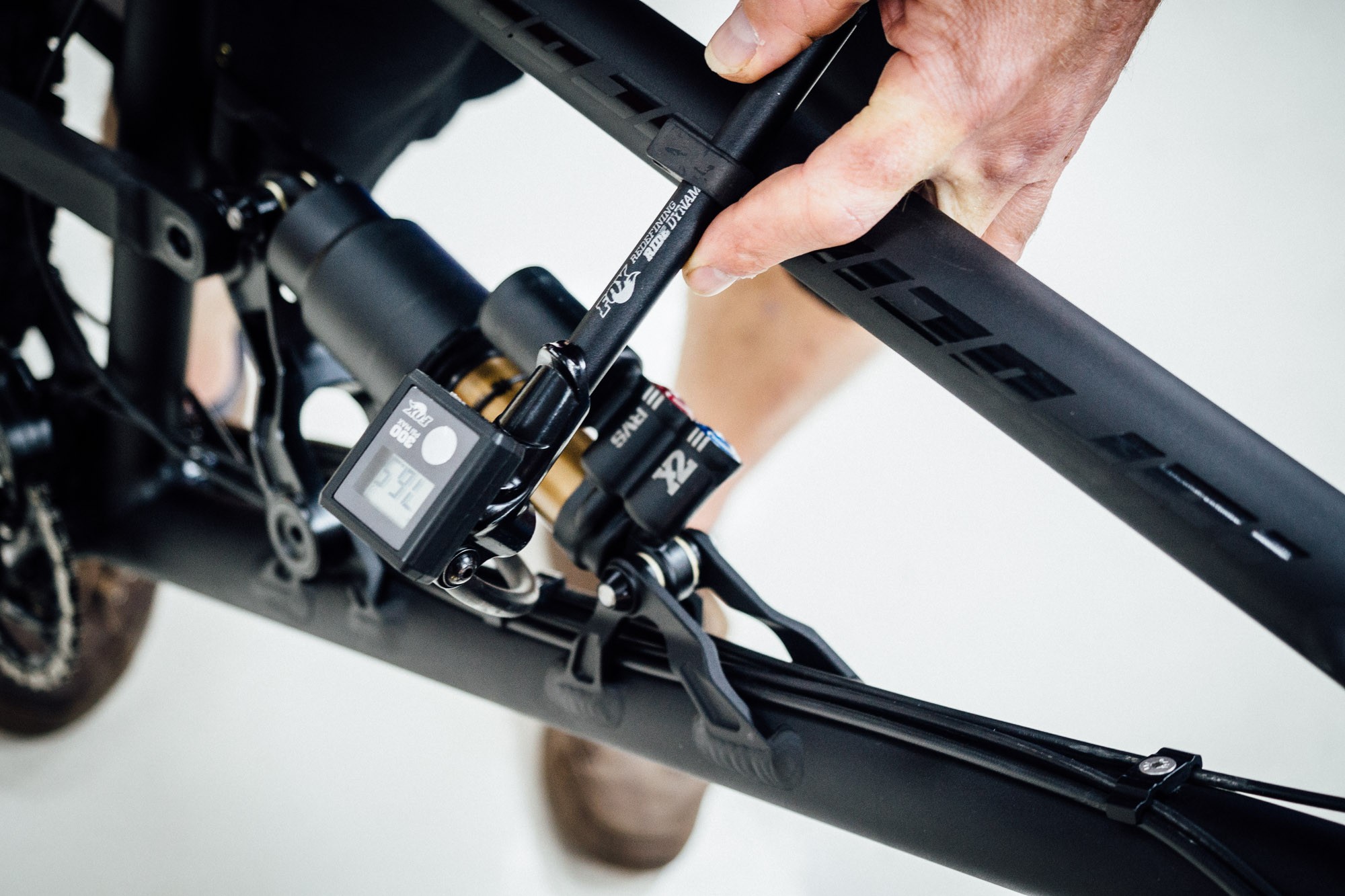
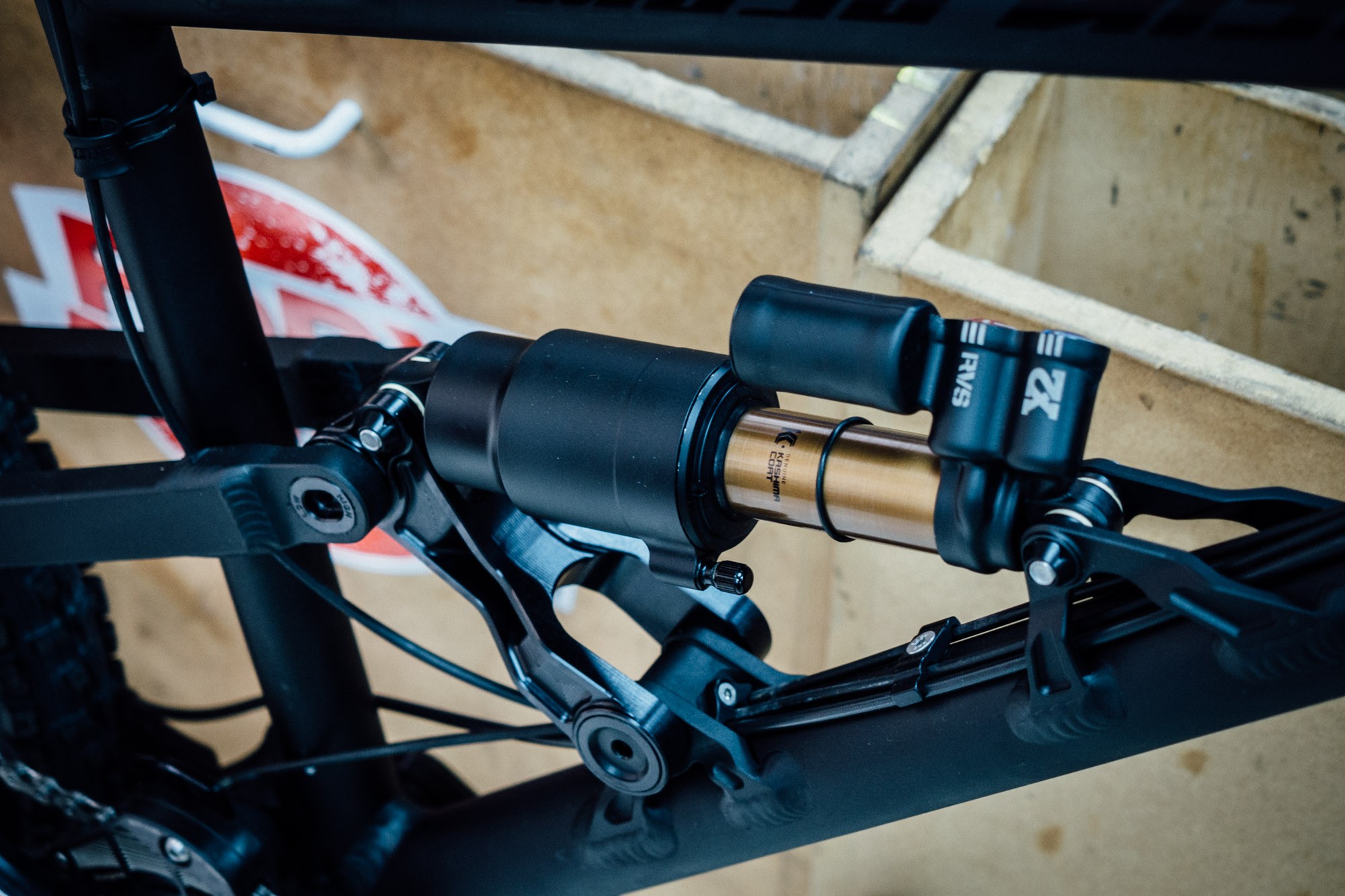
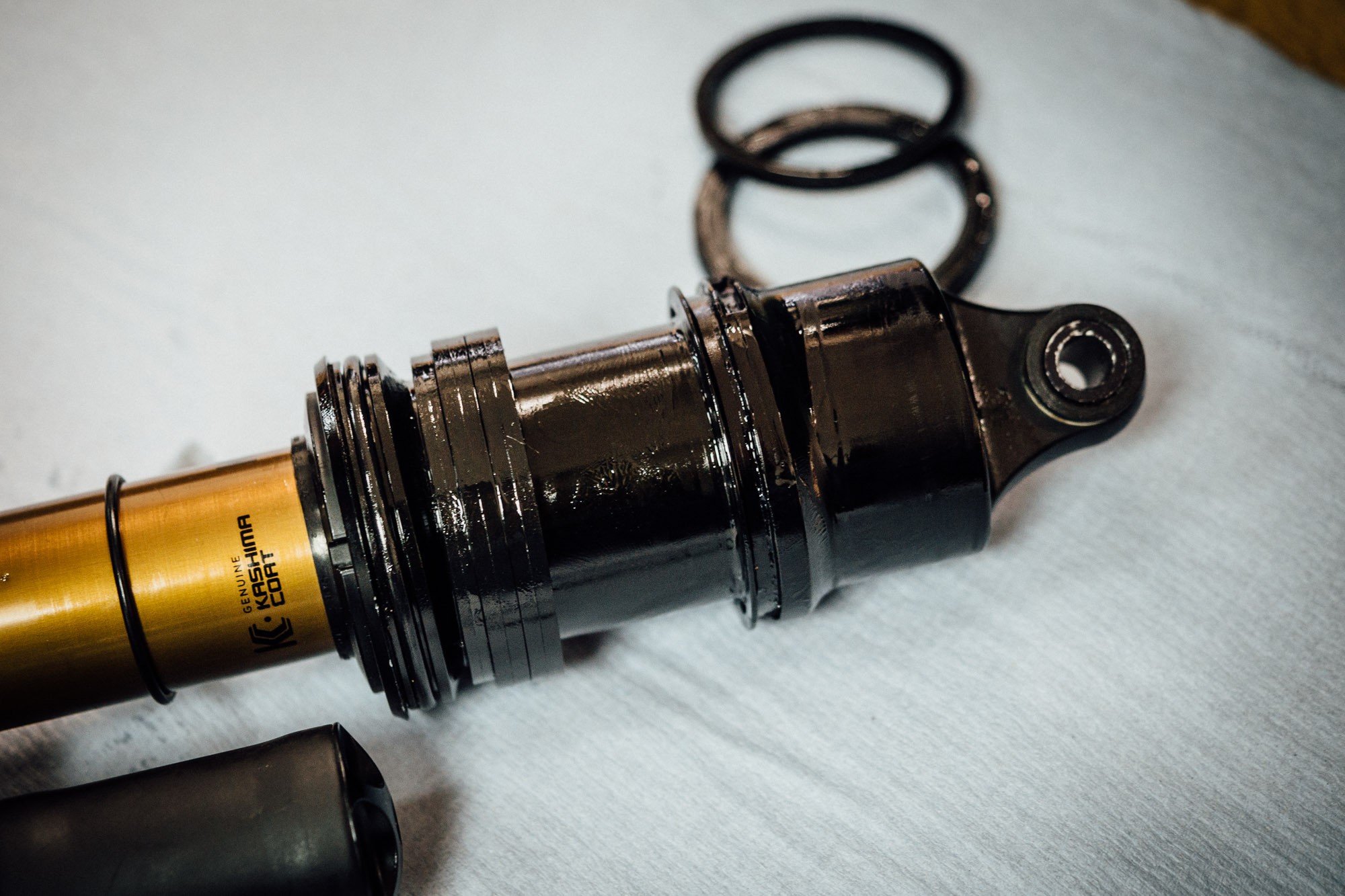
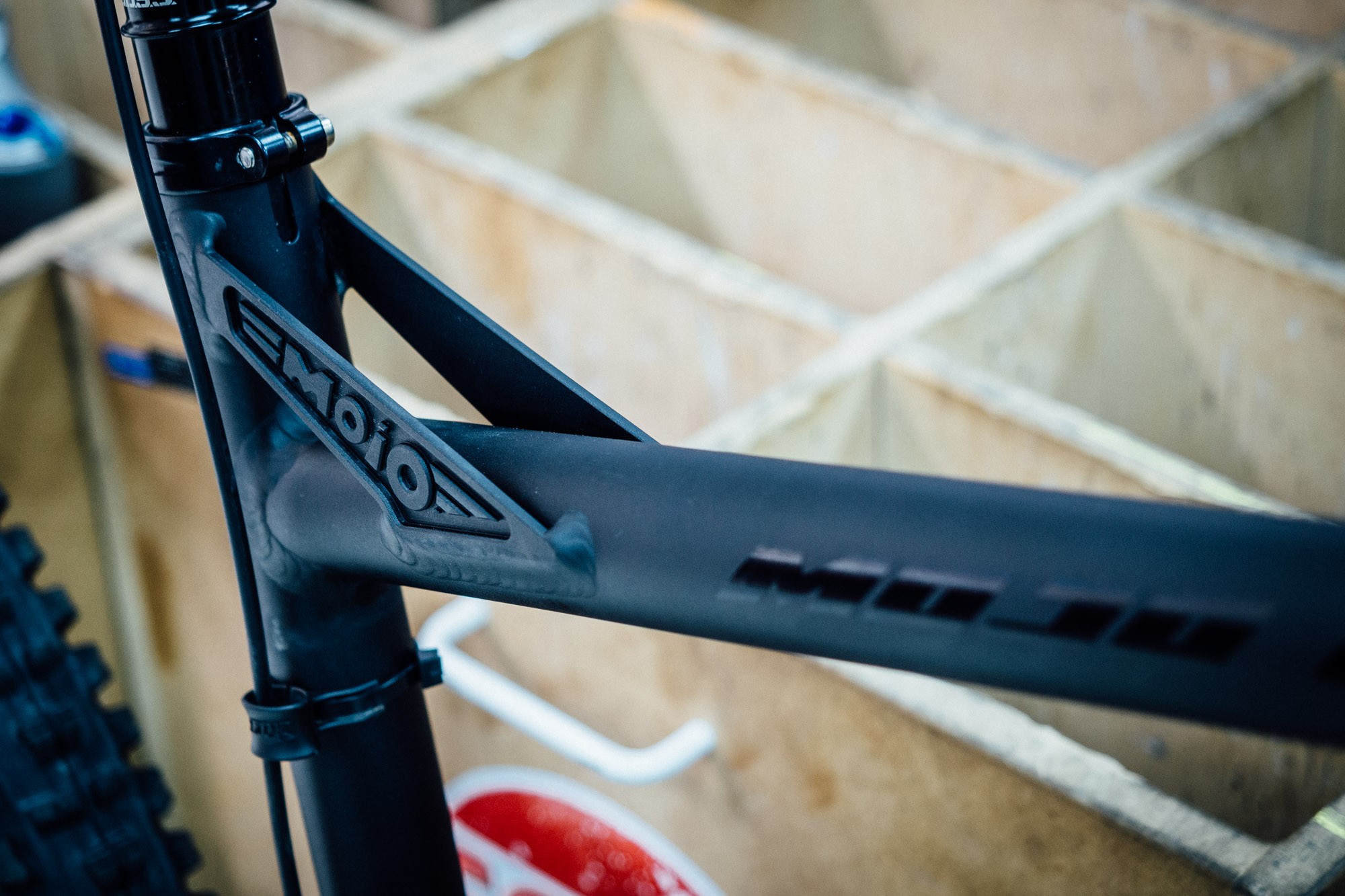
Tight corners simply aren’t a problem, the stability that comes from such a long wheelbase encourages you to nose the front wheel into the apex as tightly as possible, safe in the knowledge you won’t be pitched over the front. The low bottom bracket height and wide bars make for bike that can be cranked over much further than you might be initially comfortable with.
As you’d expect at speed it’s hyper-stable. I didn’t get a chance to take it on anything super-rocky but it felt like it would take quite a hit to knock it off line, the long wheelbase and superbly paired suspension front and rear make for a chassis that instills confidence. It’s quite infectious, to the point of addiction. I just wanted to find the limit of my nerve to let the bike go faster.
If you’re riding is primarily tight and twisty trails with little gradient I think the GeoMetron would be a bit boring and a touch of a handful, it craves speed and momentum, but equally I’m sure Mojo could make the bike work for you with a firmer suspension tune and some modifications.
My test ride was too brief. It’s took me the length of the ride to get my head around what was going on with the bike let alone make the most of it.
Obviously with Nicolai being a custom frame manufacturer there’s nothing to stop you asking for a GeoMetron-alike direct from Germany, I asked Chris what’s to stop someone doing this:
“Nothing at all to stop someone going to Nicolai and asking for an exact copy of the Mojo geometry, nothing… But the geometry is a small part of the package so it would be a shame if someone did because they might be bad mouthing the ‘Mojo’ geometry when in truth they put on a fork with a 555 axle crown instead of 580. They might have had a fork that gave good support at 120mm into the travel where we might try to get support at 80mm. They might end up with a 30T sprocket allied to a 42T cassette and wonder why the tedious fire road climbs don’t feel the same smooth story as on their mates with the Mojo version and the 34T sprocket and 40T cassette. They might even put on + tyres! I don’t mind people going to get a copy from Nicolai at all. I would just hate to think that people believed that was the whole story!”
Since our meeting a lot has gone on with Mojo’s Geometron project. There have been gearbox equipped prototypes, further tweaks to the geometry and even the adoption of Geometron variants by a World Cup DH race team. Not that any of this should come as a surprised, if there’s one thing Chris and the Mojo team are good at it’s moving forward.
Mojo Geometron – Mojo/Eyesdown Films
©Mojo Suspension
Thanks to Chris and the Mojo crew for letting us play with their bike.
Mojo

